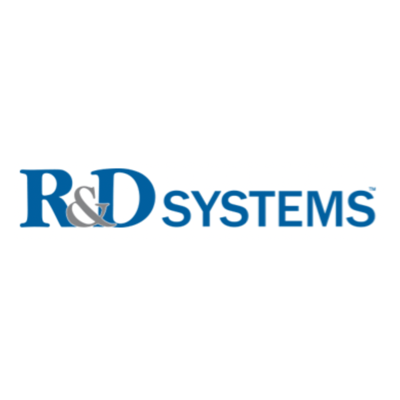 全部商品分类
全部商品分类



Gln45-Ala646
Accession # Q9QUR8


Human/Mouse Semaphorin 7A Antibody Summary
Gln45-Ala646
Accession # Q9QUR8
Applications
Please Note: Optimal dilutions should be determined by each laboratory for each application. General Protocols are available in the Technical Information section on our website.



Background: Semaphorin 7A
Semaphorin 7A (Sema7A, designated CD108, previously Sema K1 or Sema L), is an ~80 kDa membrane-anchored glycoprotein that is a member of the Semaphorin family of axon guidance molecules (1‑4). On human erythrocytes, it is the John Milton Hagen (JMH) blood group antigen (4). Sema7A is the only known Class 7 or glycophosphatidylinositol (GPI)-linked semaphorin; its expression is concentrated in the brain, spleen and thymus (1‑5). Mouse Sema7A cDNA encodes a 44 amino acid (aa) signal sequence, a 602 aa extracellular domain (ECD) including Sema and C2-type Ig-like domains, and an 18 aa propeptide/GPI membrane anchor signal sequence. Mature mouse Sema7A shares 89%, 98%, 85%, 86% and 89% aa identity with corresponding human, rat, bovine, canine and equine Sema7A, respectively. The Sema7A sema domain contains an RGD integrin interaction motif (4). Although it binds plexin-C1 in vitro and may be coexpressed with it, many of its activities depend on interaction with beta 1 integrins such as alpha 1 beta 1 (6‑10). Sema7A signaling through the two receptors may cause opposing effects (8). Sema7A is an immune semaphorin, with expression and activity on CD4+CD8+ thymocytes, activated T cells, macrophages and microglia (2, 9‑12). T cell Sema7A interacts with monocytic cells, stimulating their chemotaxis, production of pro-inflammatory cytokines, and dendritic differentiation (5, 6). However, on the T cells themselves, Sema7A downregulates TCR signaling by promoting TCR internalization, modulating T cell responses (9). In lung macrophages, Sema7A is induced by TGF-beta and participates in TGF-beta -induced lung fibrosis (12). Sema7A is also expressed on pre-osteoblasts and osteoclasts, where it promotes migration and fusion, respectively; on keratinocytes, where it promotes melanocyte spreading and dendricity; and on some neurons, for example, promoting axon outgrowth in the developing olfactory tract (8, 10, 13).
- Yazdani, U. and J.R. Terman (2006) Genome Biol. 7:211.
- Kikutani, H. et al. (2007) Adv. Immunol. 93:121.
- Sato, Y. and (1998) Biochim. Biophys. Acta 1443:419.
- Yamada, A. et al. (1999) J. Immunol. 162:4094.
- Holmes, S. et al. (2002) Scand. J. Immunol. 56:270.
- Suzuki, K. et al. (2007) Nature 446:680.
- Pasterkamp, R.J. et al. (2007) BMC Dev. Biol. 7:98.
- Scott, G.A. et al. (2007) J. Invest. Dermatol. 128:151.
- Czopik, A.K. et al. (2006) Immunity 24:591.
- Pasterkamp, R.J. et al. (2003) Nature 424:398.
- Mine, T. et al. (2000) Tissue Antigens 55:429.
- Kang, H.-R. et al. (2007) J. Exp. Med. 204:1083.
- Delorme, G. et al. (2005) Biol. Cell 97:589.


Preparation and Storage
- 12 months from date of receipt, -20 to -70 °C as supplied.
- 1 month, 2 to 8 °C under sterile conditions after reconstitution.
- 6 months, -20 to -70 °C under sterile conditions after reconstitution.







 用小程序,查商品更便捷
用小程序,查商品更便捷




